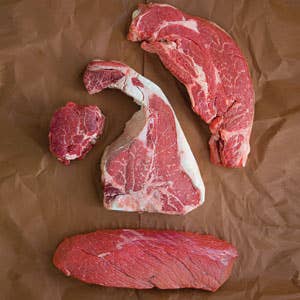
Techniques
Favorite Cuts of Beef
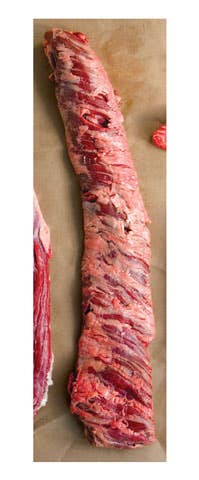
The loose grain and intensely beefy taste of skirt steak-the long diaphragm muscle of the steer-most often makes its appearance in the Tex-Mex favorite fajitas.
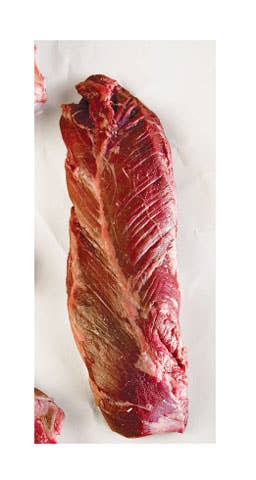
There is only one hanger steak per steer; part of the diaphragm, it "hangs" from the last rib when the animal is suspended during butchering. The meat of these steaks has deep, satisfying flavor, but, as with other coarse-grained cuts like flank and skirt, it can be chewy if cooked past medium rare.
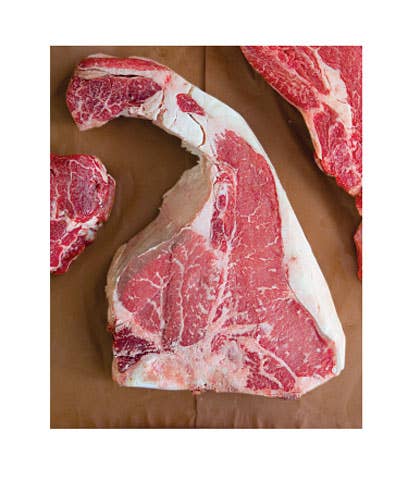
When the short loin of a steer is cut crosswise, the resulting steaks contain a portion of the top loin and the tenderloin separated by a T-shaped bone. The porterhouse comes from the thicker end of the short loin (the T-bone comes from closer to the rib and has a considerably smaller portion of the tenderloin).
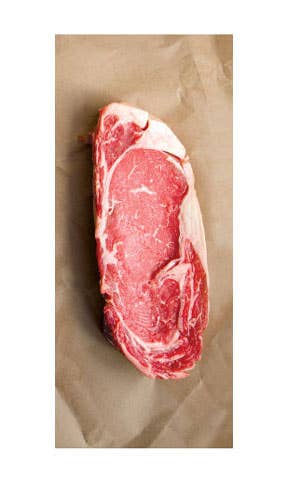
These well-marbled steaks, taken from the steer's rib section, offer the perfect balance between the tough, full-flavored chuck and the super-tender but milder-flavored loin. Rib eyes taken from the rib end closest to the chuck consist of a number of different muscles. Rib eyes taken from the end closest to the loin, do too, but include a bigger portion of the prized eye meat and are often pricier.
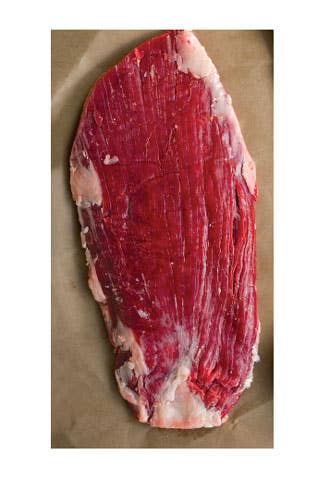
This flat, rectangular steak (also called a london broil) from the belly of the steer is distinguished by the coarse grain that runs lengthwise across it. Its big flavor and fibrous texture take well to grilling or broiling, as long as you don't cook it past medium rare and, when serving, remember to slice it thinly across the grain.
ADVERTISEMENTADAD
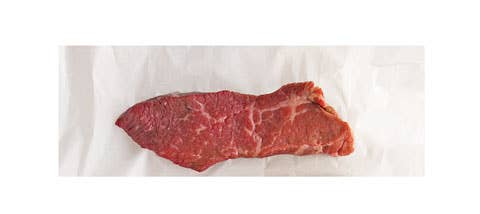
Tri-tip steaks come from a triangle-shaped muscle, known as the tri-tip, located in the bottom part of the sirloin section of the animal, which corresponds to the hip portion. These tender, full-flavored steaks-also known as newport steaks and triangle steaks-weigh three to eight ounces.
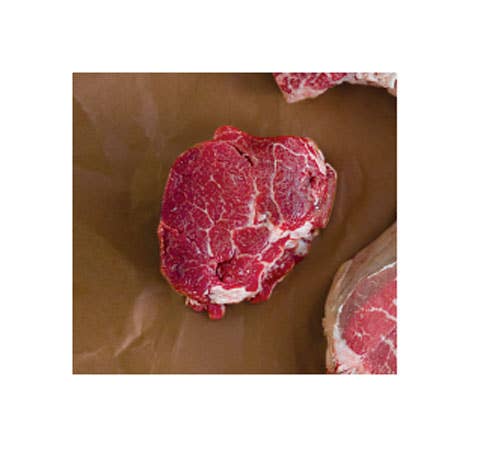
Filet mignon steaks are made by cutting neat cross-sections from the thicker portion of the little-worked muscle known as the tenderloin, which is the tenderest muscle in the steer. The filet mignon gets its name from the French: mignon means dainty. Filets mignons range from four to 12 ounces each and have virtually no marbling.
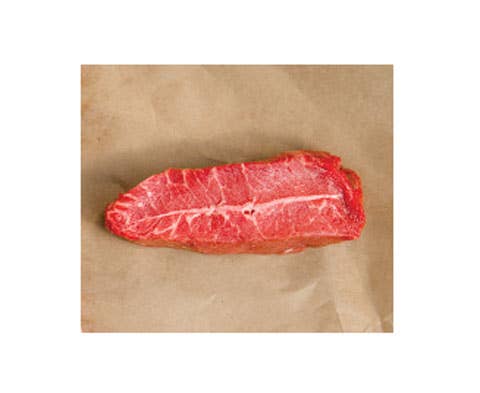
This small, oblong cut from the chuck-also called a flatiron steak-is the second-tenderest in the entire steer after the tenderloin. A thin line of gristle runs down the center; increasingly, butchers remove it, making thin, rectangular steaks. Top blade steaks range from four to eight ounces each.
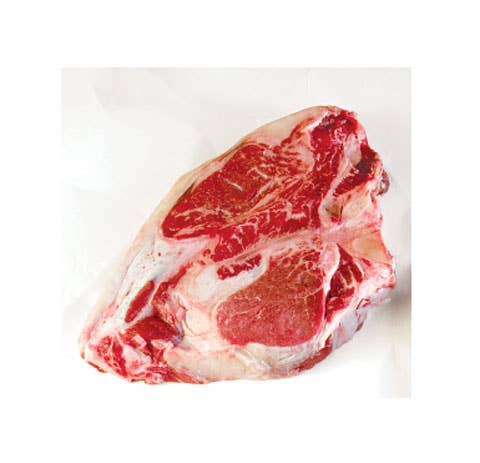
The pin-bone steak is the most succulent of the sirloin steaks. Like the porterhouse, it consists of a piece of tenderloin and a meaty portion of top loin, but it also contains a telltale oval cross-section of the hip bone. Pin-bone steaks often include a tail, or flap, of tasty but fatty meat that protrudes above the steak and is usually trimmed off before sale.
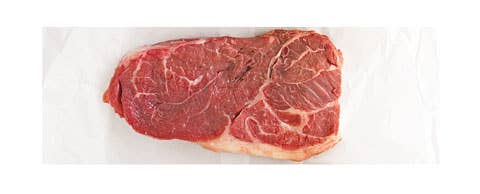
This large, oblong (and inexpensive) steak comes from the boneless portion of the chuck, or shoulder. These robustly flavored steaks stand up well to marinades; for best results slice thinly on the bias before serving.
ADVERTISEMENTADAD
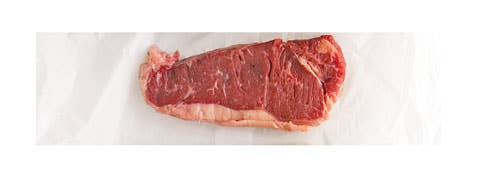
The top loin (the designation "top" is a butchering term that identifies how the muscles sit in relation to one another) is part of the larger primal cut known as the short loin, which in turn is part of the full loin-the muscle group that runs alongside the backbone from the shoulder to the animal's hip. Boneless top loin steaks go by a potentially confusing array of names-including strip loin and new york strip-and can weigh anywhere from eight to 18 ounces. Bone-in top loin cuts are sometimes called shell steaks or club steaks.
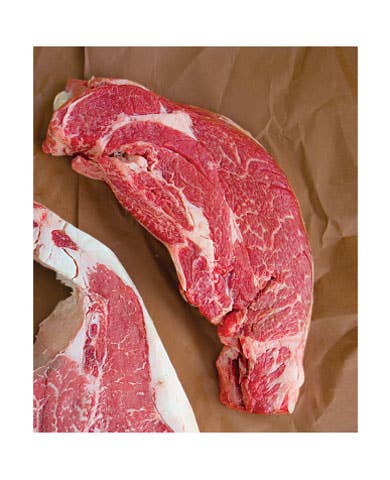
These steaks come from underneath the steer's shoulder blade bone. These well-marbled, intensely flavorful steaks weigh between four and eight ounces and go by a number of names, including chuck filet, chuck eye, and bottom chuck.
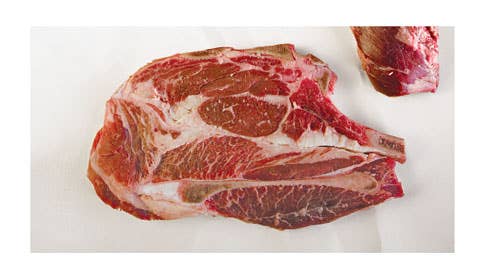
This wide, well-marbled steak, usually weighing about eight ounces, consists of several different muscles from the rib end of the chuck. Only the first few steaks cut from this part of the chuck may be labeled first cut, and these are recognizable by a flat piece of blade bone.
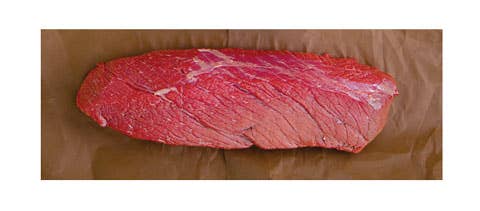
The top round comes from the inside portion of the steer's hind leg. All round steaks are lean, and care should be taken not to overcook them.
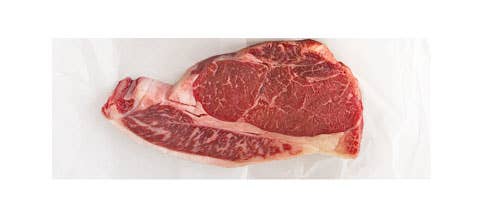
These big, boneless steaks come from the largest muscle of the sirloin, a continuation of the top loin. Relatively lean, top sirloins vary in tenderness and size, but all make an economical choice for a satisfying steak dinner. Top sirloin sometimes goes by the names sirloin butt and top sirloin butt.
ADVERTISEMENTADAD
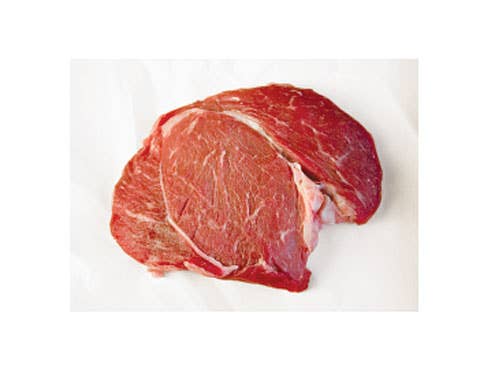
This cut, also called the knuckle, comes from the part of the hindquarter of the steer closest to the tender sirloin, but it actually extends into the round, of which it is a part. Thus, sirloin tips are the tenderest of the round cuts; in fact, butchers often label them sirloin. Shaped like a half moon, this lean and quick-cooking cut weighs about eight ounces and delivers good, beefy flavor at a great price.
Keep Reading
Continue to Next Story
ADVERTISEMENTADAD










